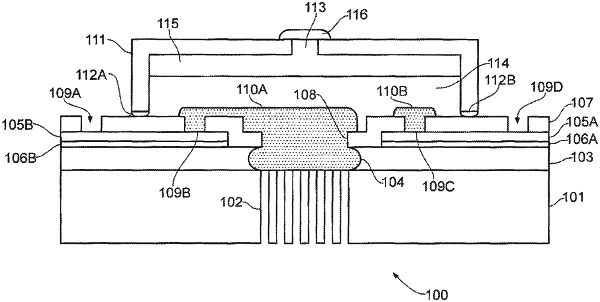| CPC G01N 27/407 (2013.01) [G01N 27/304 (2013.01)] | 13 Claims |

|
1. A method of manufacturing an electrochemical sensor, comprising:
forming an insulating layer on a monolithic substrate including a capillary formed therein, the capillary extending between a first major surface of the substrate and a second major surface of the substrate;
forming a passivation layer over the insulating layer;
providing at least one hole in the substrate;
providing an opening in the insulating layer and the passivation layer;
forming at least one porous electrode in the opening in the insulating layer and passivation layer aligned with the capillary extending through the insulating layer and is formed in or adjacent the first major surface of the monolithic substrate in an area defined by the opening such that the at least one porous electrode is exposed to an environment through the substrate;
forming at least one additional electrode over the insulating layer, wherein at least a portion of the at least one additional electrode is formed in a hole in the passivation layer to connect the at least one additional electrode to a conductive track; and
forming a layer of electrolyte over the at least one porous electrode and the at least one additional electrode and the insulating layer.
|